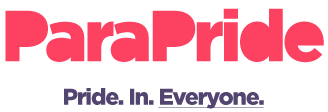We refer to a disabled person, to disabled people or to the disabled community. We use identity-first language in line with the social model and UK disability rights movement, rather than person-first, USA-preferred person/ people with disabilities.
When we want to give examples of different kinds of disability, we use the terms physical or sensory impairment, chronic illness, learning disability or mental health condition, as well as the identity-first terms Deaf, autistic or neurodivergent. We might describe a disability as visible or invisible. We also recognise that some people who are disabled would never identify as such, so we might sometimes refer to people with a health condition or impairment.
